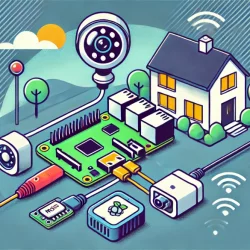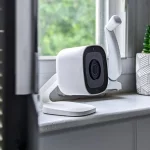Top 5 Most Overlooked Babyproofing Measures
According to the Royal Society for the Prevention of Accidents, children from ages 0-4 have the highest risk of suffering from at home accidents. In some very unfortunate cases, these accidents can result in permanent disfigurement, disability, and even in death. Nearly all accidents that occur in the home and involve children can be prevented with the right care and precaution. Don't allow the lack of awareness cost your child a healthy and fulfilling life.
Rather, spend a little extra time to go over some of the less obvious child-proofing measures you can take to make your home as safe as possible for the whole family.
Pool Fencing
Drowning deaths and injuries are fast becoming the number one cause of death among children between ages 0-4. Due to a lack of pool fencing and proper adult supervision, an average of 400 children wander into the pool area of their home per year, leading to incidents that can quickly result in death. In order to reduce the appeal for a child to wander into the pool area, keep toys and other attractive items away from the pool.
It’s also extremely important to install fencing around the garden pool, and in most areas, including Western Australia, this is actually required by law. There are a number of important pool fencing regulations the fencing must abide by - the pool fence must be climb resistant, be at least 4 feet high, have a well maintained gate that is always locked and unreachable for the child. It also must not have more than 4 inches between vertical slats. For this reason it’s not advisable to install DIY – get the help of a fencing company that can make sure your fencing is up to code and as safe as possible.
Scalding Water
Another very common cause of child accidents within the home is scalding water. All children of a young age are infinitely curious, and when you leave them to their own devices, they have a tendency to find trouble, especially where hot water is located. If left unattended in a bathtub or in an area with a sink, children are prone to turning the handle and burning themselves with water.
In addition, if a teapot or bottle of hot water is left on the counter, the child is also able to reach up and knock it down, thus injuring themselves.
In order to prevent these types of overlooked scenarios, it is best that you consider reducing the temperature of your water heater. Baby proof the hot water device in your home and turn down the temperature to prevent serious burns from occurring. Also keep kettle cables secured to the walls and kettles pushed right in on the worktop to prevent kids from pulling the water down on themselves.
Heights
In addition to scalding water and pool fencing, heights are another necessity to child-proof. This is one you might think you have covered by securing upstairs windows, but what seems like a small distance to a grown up can be a height for a small child, so keep an eye out for some other lower ‘heights’ that could pose a threat.
Start with the obvious things like securing your windows with child proof locks, keeping your windows closed, and purchasing a gate for both the bottom and top of your stairs. It’s likely that your stairs will already have railings or a bannister, but what you may have overlooked, however, is how wide the space is between each bannister. Ensure that there are no railings that the child can climb through.
Strangulation
As previously stated, children are very curious creatures. As such, they are prone to wandering into areas where electrical equipment is located and exploring them. Wires can be extremely dangerous, as they can be a method for the child to accidently strangle. Aside from electrical equipment, curtains and hanging items are also items that need to be heeded. In order to prevent your child from having an accident with wires, curtains, or random hanging items that can be dangerous, find ways to shorten these items. A few ideas are to tie wires together, keep hanging items out of reach, and tie back curtains enough so the child cannot access them.
Electrocution
Lastly, electric equipment and outlets pose an especially high risk for children. A few of the items that need to be child-proofed are outlets, cords, and electrical equipment. A few ways to baby-proof electrical equipment is to install outlet plug inserts, outlet cord box covers, sliding outlet covers, and to keep all electrical equipment out of the reach of your child. It is also very easy for a child to climb on furniture in order to reach an item, therefore consider rearranging your furniture to make all dangerous items inaccessible to your child.
Matthew Suter is Managing Director of Fencemakers, a leading provider of Pool Gates and Fencing in Perth, WA. Find Matthew on Google+.
More to Read:
Previous Posts:




